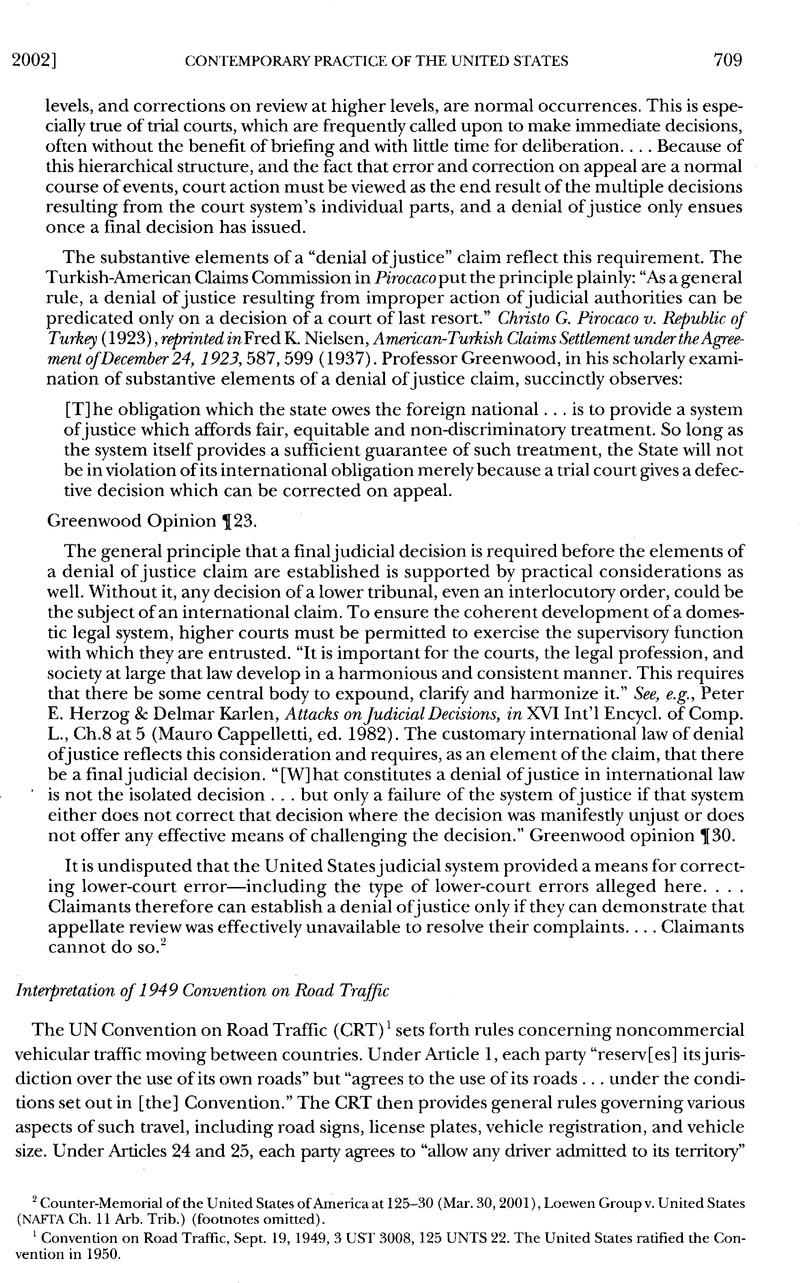No CrossRef data available.
Published online by Cambridge University Press: 10 March 2017

1 Convention on Road Traffic, Sept. 19, 1949, 3 UST 3008,125 UNTS 22. The United States ratified the Convention in 1950.
2 Article 24(1) of the Convention provides:
Each Contracting State shall allow any driver admitted to its territory who fulfils the conditions which are set out in annex 8 and who holds a valid driving permit issued to him, after he has given proof of his competence, by the competent authority of another Contracting State or subdivisions thereof, or by an association duly empowered by such authority, to drive on its roads without further examination motor vehicles of the category or categories defined in annexes 9 and 10 for which the permit has been issued.
3 [Editor’sNote:8U.S.C.§1101(a)(13) (1994).]
4 Letter from Catherine W. Brown, Assistant Legal Adviser for Consular Affairs, U.S. Department of State, to Charles C. Olson, General Counsel, Prosecuting Attorney’s Council of Georgia (Apr. 12, 2002) (on file at GWU). For recent U.S. cases interpreting Article 24(1) of the Convention, see Busby v. Alaska, 40 P.3d 807 (Alaska Ct. App. 2002); Eskew v. Young, 992 .Supp. 1049 (S.D. Ill. 1998).